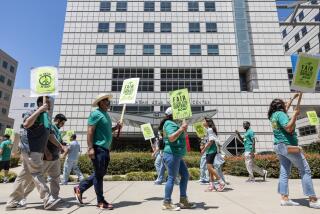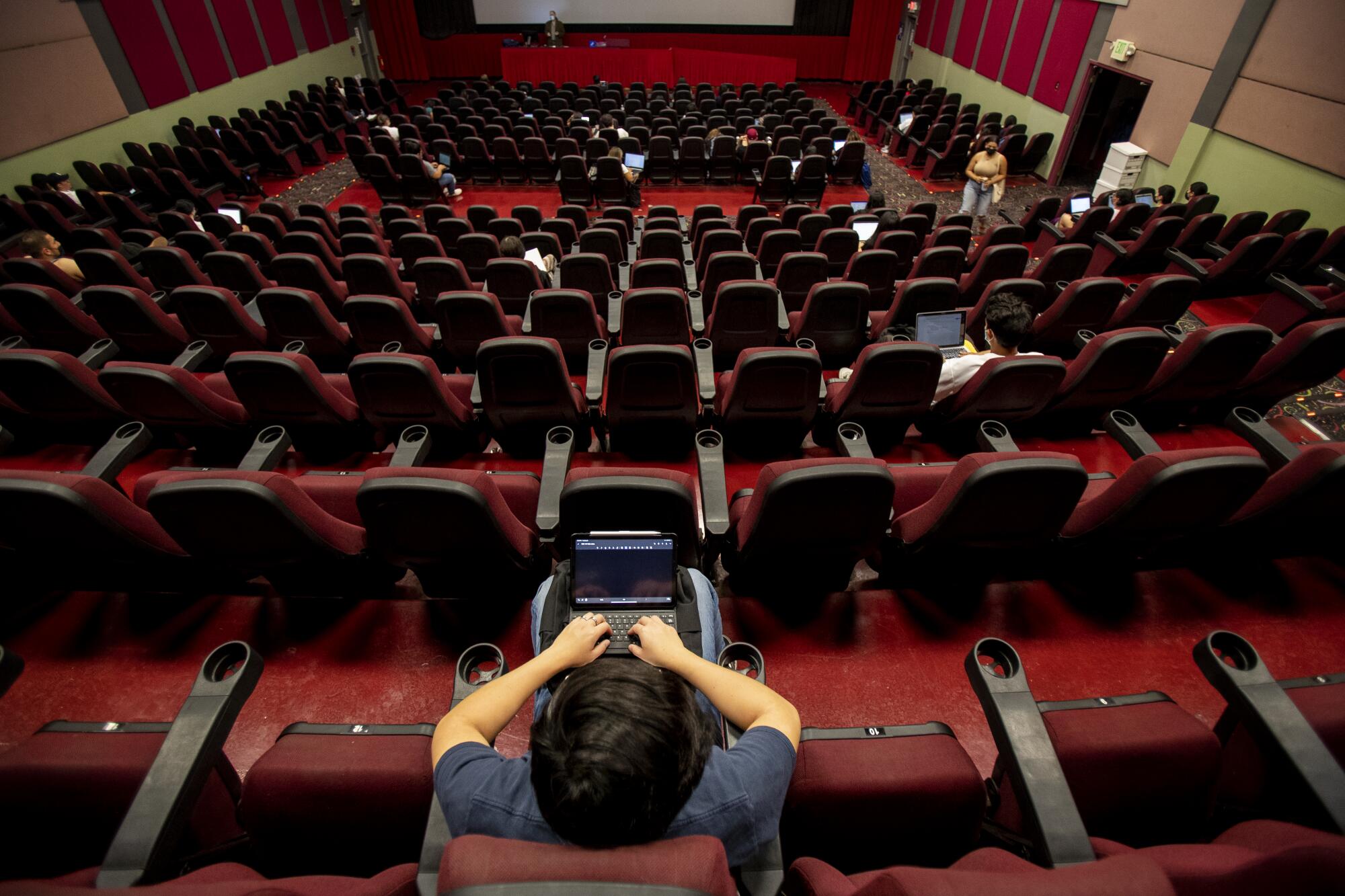
Jordan Guillory, a UC Riverside junior, is never sure where his math class will meet. Sometimes, it’s outdoors. Other times, it’s an empty lecture hall. The class never received an assigned classroom as the Inland Empire campus grappled with a 4,450-seat shortfall in instructional space, the second-highest deficit in the University of California system.
Guillory, a low-income transfer student from San Diego Miramar College, is already behind schedule to graduate in the expected two years. He wasn’t able to get sufficient advising and missed taking a course in a needed math sequence, which will set back his graduation by at least a quarter. UC Riverside is short more than 700 staff members and 100 faculty members, compared with the UC systemwide average per-student ratios.
And he and other UC Riverside students, faculty and staff endure leaking roofs, falling ceiling tiles laden with asbestos, lead-based paint peeling from walls and power failures that have destroyed laboratory research specimens.
Those conditions outrage many campus members and influential supporters such as Assemblyman Jose Medina (D-Riverside). They question why the Inland Empire campus — which educates the system’s second-highest share of California low-income students of color — lacks the resources of other campuses.

About half of UC Riverside students are low-income, underrepresented minorities or the first in their families to attend college. A 2011 state audit found that UC distributed less per-student funding to Riverside and three other campuses with high proportions of students from underrepresented racial and ethnic groups.
Then-UC President Mark G. Yudof blasted the audit’s implication of race-based inequity as “unwarranted and inflammatory” and said that differences in funding levels were based on myriad factors. They included a campus’ number of students in health sciences and graduate programs, which are more costly to operate, and historical variations in state enrollment funding. UCLA, for instance, received the most per-student funding among the system’s nine undergraduate campuses at the time of the audit in part because it educates more health sciences and graduate students and benefited from robust enrollment growth before 1990, when state funding was more generous.
UC subsequently adopted changes in allocation formulas aimed at more equity. But Medina — and UC Riverside officials — argue that more support is needed.
Medina is sponsoring new state legislation to dramatically boost support for Riverside and UC Merced, which has the highest share of low-income students of color, through an “Inland Rising Fund” that would pay for more classrooms, labs, faculty, staff and research projects aimed at powering economic development in the often neglected Inland Empire and Central Valley regions.
“This is an attempt to level the playing field and do something that has been overdue and is just the right thing to do as well,” Medina said about the funding boost.
The bill establishing the fund was approved in a 74-0 vote by the California Assembly last month and is scheduled for a Senate hearing next week. It does not yet include the $1.4 billion that Medina has proposed. The Legislature and Gov. Gavin Newsom will need to negotiate the final funding level during state budget talks this month, Medina said, but the preliminary budget approved by legislators this week includes an initial $249-million allocation over three years for campus expansion projects at UC Riverside and UC Merced and at least $185 million to fully fund climate initiatives at the two campuses and UC Santa Cruz.
Medina, a UC alumnus and former high school teacher, says the funding boost would be a “game changer” for the state’s inland regions. His funding proposals include support for research into climate change, including a new UC Riverside clean technology park and a UC Merced center for climate and social justice, along with medical education to help train healthcare professionals for the underserved area.
The UC Office of the President is still reviewing the legislation to assess the effect it would have on overall funding for the 10-campus system, which educates 295,000 students.
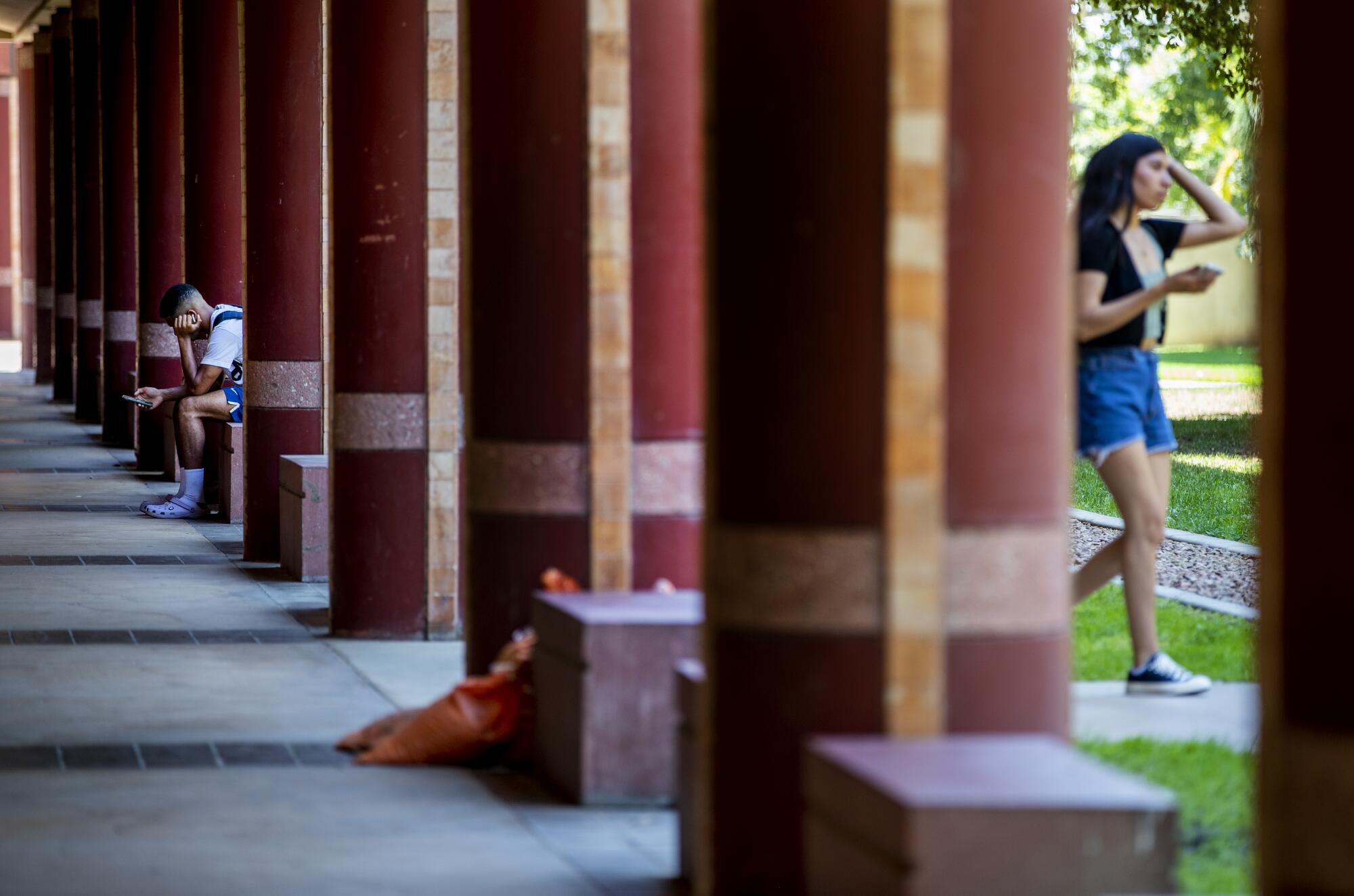
To help even the playing field, UC officials provided enrollment funding this year to the Riverside, Santa Cruz and San Diego campuses under an initiative to bring all nine undergraduate campuses to within 95% of the systemwide per-student average by 2024. Riverside received $6.7 million for 2021-22 and is slated for an estimated $45 million more over the next two years.
Nathan Brostrom, UC’s chief financial officer, said that the university is committed to “equitable and transparent” allocations but that all of its campuses have been struggling with lack of adequate funding.
Deferred maintenance and repair needs alone total $1.9 billion annually, according to the Legislative Analyst’s Office, and older campuses require more costly seismic safety upgrades along with other repairs.
UC Riverside Chancellor Kim Wilcox said he appreciates the additional funding, particularly after the pandemic triggered enormous revenue declines in 2020 and forced the campus to consider axing its entire athletics program. As the state recovered, with record-setting budget surpluses, Riverside was able to avoid such drastic measures.
“Everything is better, no doubt,” Wilcox said. “Now we’re talking about opportunities.”
Now, as student demand for UC seats continues to escalate, UC Riverside has room to grow, Wilcox said. Its long-range development plan envisions adding about 8,000 more students to its current population of 27,000 by 2035, a faster pace than campuses such as UCLA and UC Berkeley, which are shoehorned into smaller land parcels.
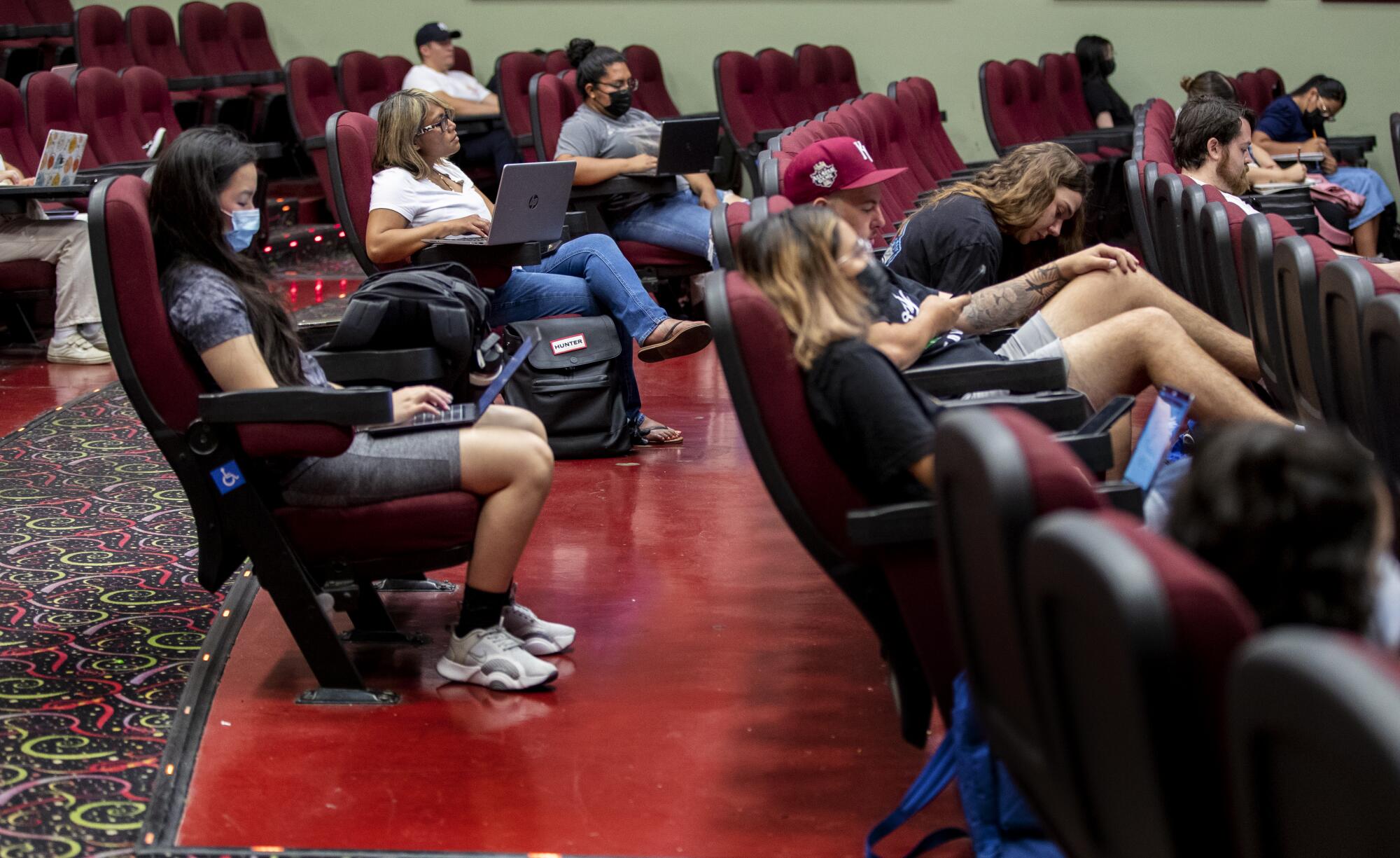
But that can happen only with more funding, Riverside officials say.
“We’re already bursting at the seams,” said Emily Engelschall, associate vice chancellor of enrollment services.
She said the campus has committed to enrolling an additional 300 students for fall 2022 but she worries about how well they will be served. More faculty and graduate students are needed to teach more courses, and more classrooms and labs are needed to house them. And more academic advisors are needed to guide students, 54% of whom are the first in their families to attend college.
Karina Patel, a low-income, first-generation student, said she was lost and confused trying to understand the system when she arrived three years ago as a neuroscience and pre-health major. She didn’t know how to interpret the roadmap of course requirements needed to graduate in four years. She wasn’t sure how to find out which classes were offered. And competition to snare an appointment with counselors was fierce, she said.
“You can’t get ahold of counselors,” Patel said. “Your friends only know so much. How are we supposed to finish in four years when we don’t even know what we’re doing?”
Shortages of classroom and lab facilities are another impediment to timely graduation. Most of Riverside’s students apply to only 10 of 90 majors, with biology particularly popular. But a shortage of lab space for the required organic chemistry course has created a huge bottleneck, impeding student progress toward degrees, Engelschall said.
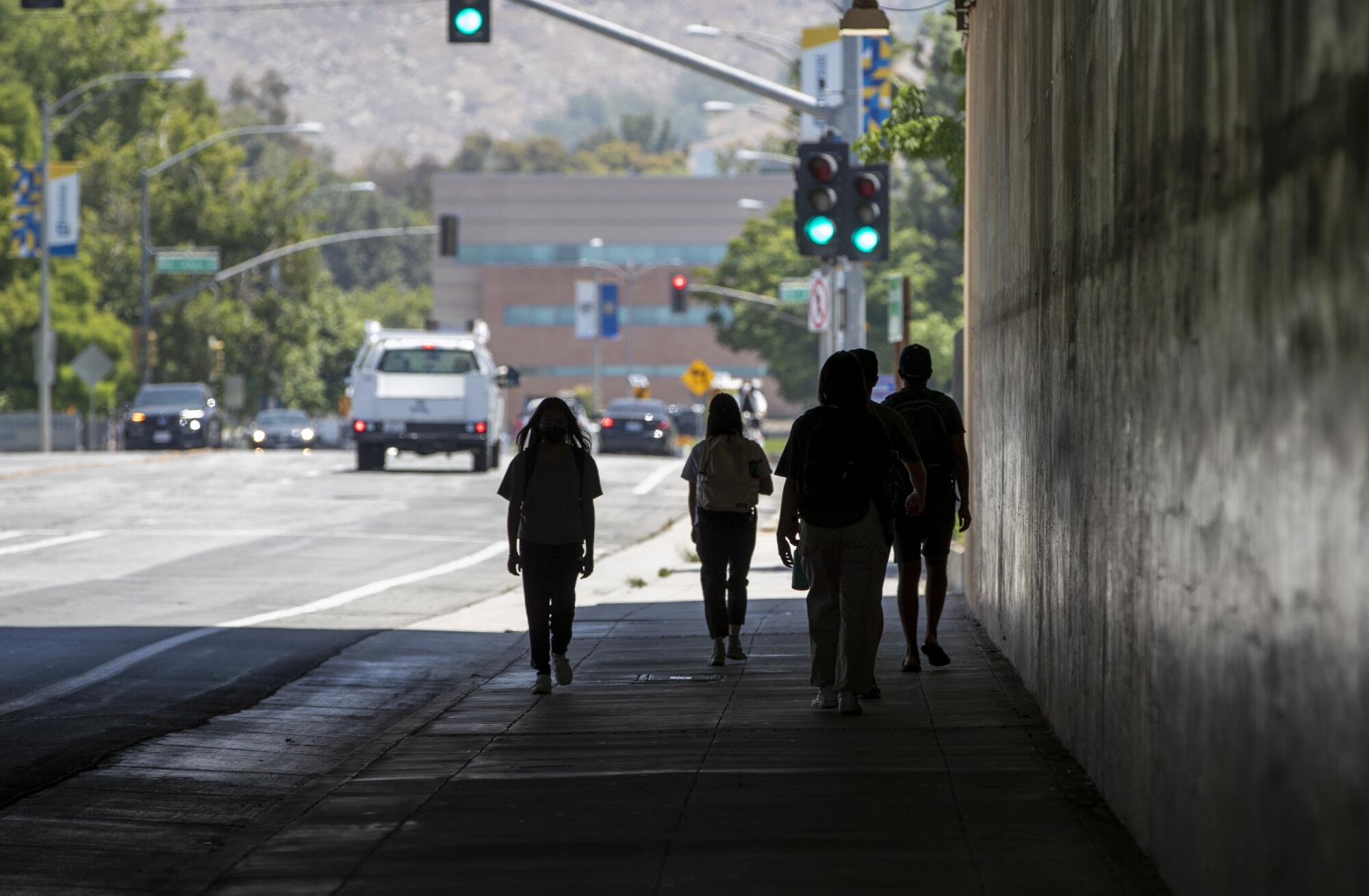
For the last 25 years, UC Riverside has taught some of its classes in a movie theater in the off-campus University Village. But the lighting is dim, the lingering smell of popcorn is distracting and seats don’t swivel to accommodate small-group discussions, as is the state-of-the-art classroom practice, said Associate Provost Ken Baerenklau.
The theater also takes as long as 20 minutes to reach by foot, which complicates course schedules, as classes are generally spaced 10 minutes apart. Some students who have taken classes there said they didn’t feel safe walking from the theater back to campus at night.
“We’re coming into a crisis because enrollment keeps going up and we have finite space and it’s getting older by the year,” said Peter Atkinson, a professor of entomology.
Atkinson, who has taught at Riverside for 25 years, said the acute shortage of staff has forced faculty to take on administrative jobs, such as ordering supplies, making travel arrangements and dealing with payment snafus for their graduate students. All of that, he said, reduces time to teach, meet with students, do research and write.
And the deteriorating facilities have jeopardized research, he added. He has spent evenings and weekends trying to save plants when power failures jeopardized the controlled climates. Other staff members said researchers have lost work to lab floods and contaminated air.
During a recent campus tour, officials pointed out some of the problems. At Spieth Hall, one lab supervisor brought out a vial of grey gunk he said routinely falls from overhead vents like dirty snow onto students and research benches (the campus tested the material and found it not harmful to health). Roofs leak and ceiling tiles, made with asbestos, fall during rains.
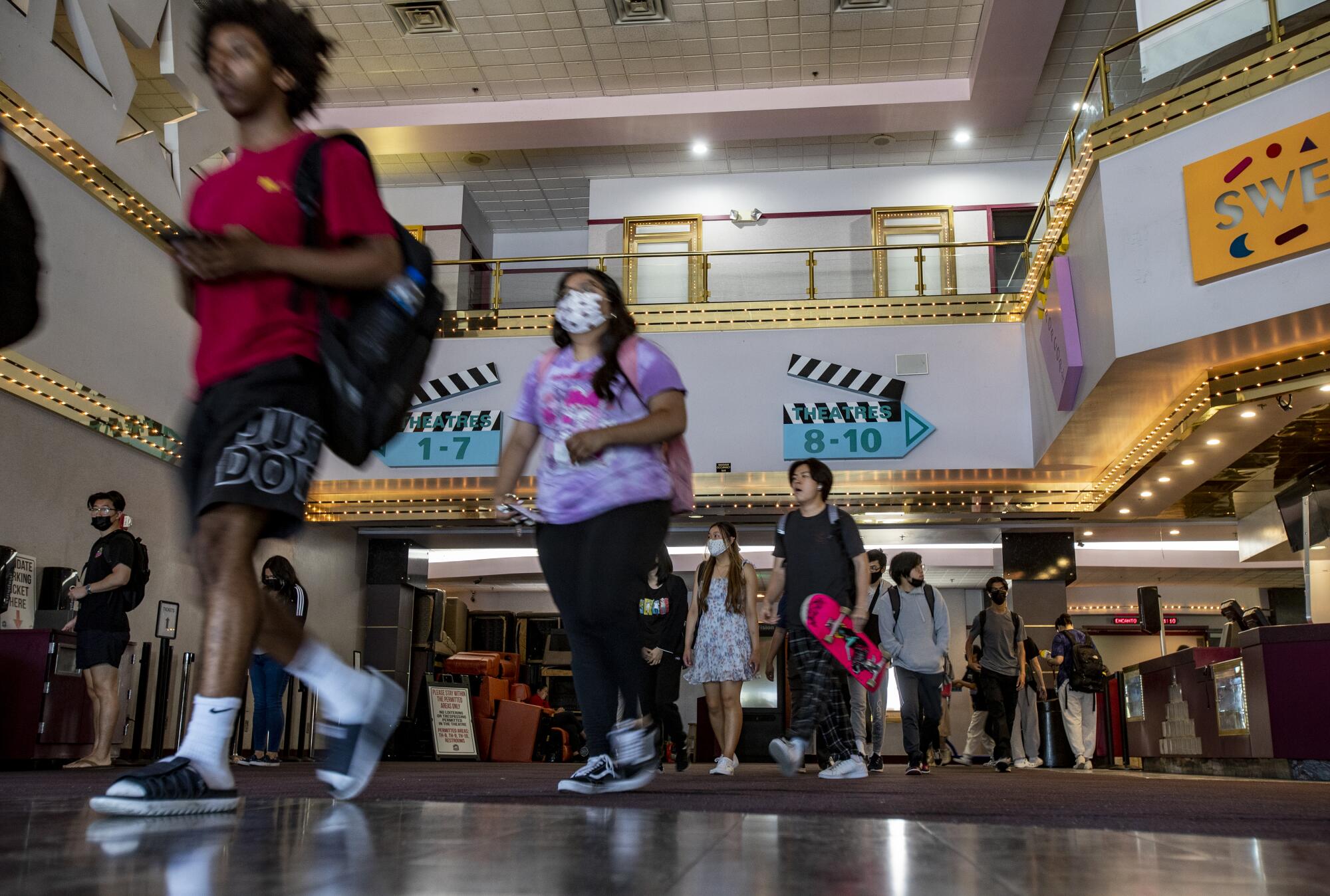
The physics building sported streaks of white where peeling lead paint had been removed from walls and patched over. On a recent visit, some of the halls were unswept, because staff shortages have saddled each custodian with an average of 46,000 square feet to clean, twice the systemwide average, according to Gerry Bomotti, vice chancellor of planning, budget and administration.
Riverside’s newest building, however, showcases its promise. The $60-million, 60,000-square-foot Student Success Center, which opened last fall, includes the UC system’s only circular lecture hall with high ceilings, fully rotating seats, eight screens and a 400-student capacity.
As students Guillory and Patel were studying in the center’s ground-level lobby, they said they hope the campus will continue to improve facilities and extend operating hours to give students comfortable spaces for group study sessions.
That’s the vision of Medina and campus officials. They’ve included two undergraduate instructional buildings, engineering and natural sciences facilities, a clean technology park and support for the medical school at the top of their Inland Rising Fund wish list.
“Our students need and deserve better,” Medina said.
More to Read
Sign up for Essential California
The most important California stories and recommendations in your inbox every morning.
You may occasionally receive promotional content from the Los Angeles Times.


